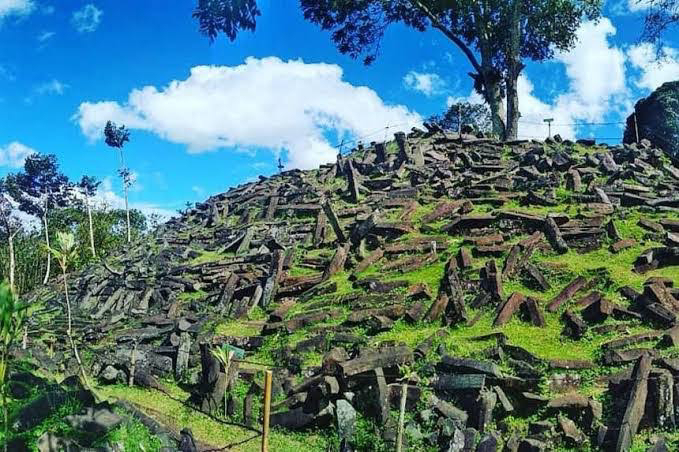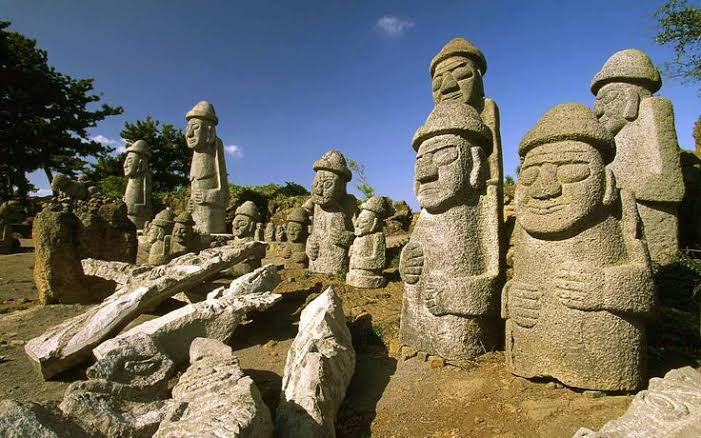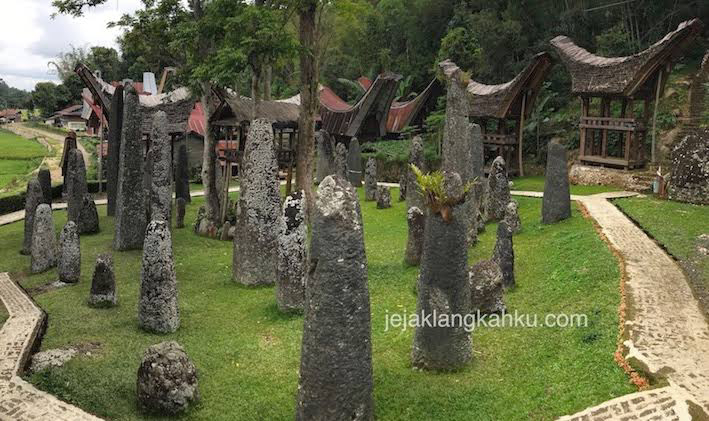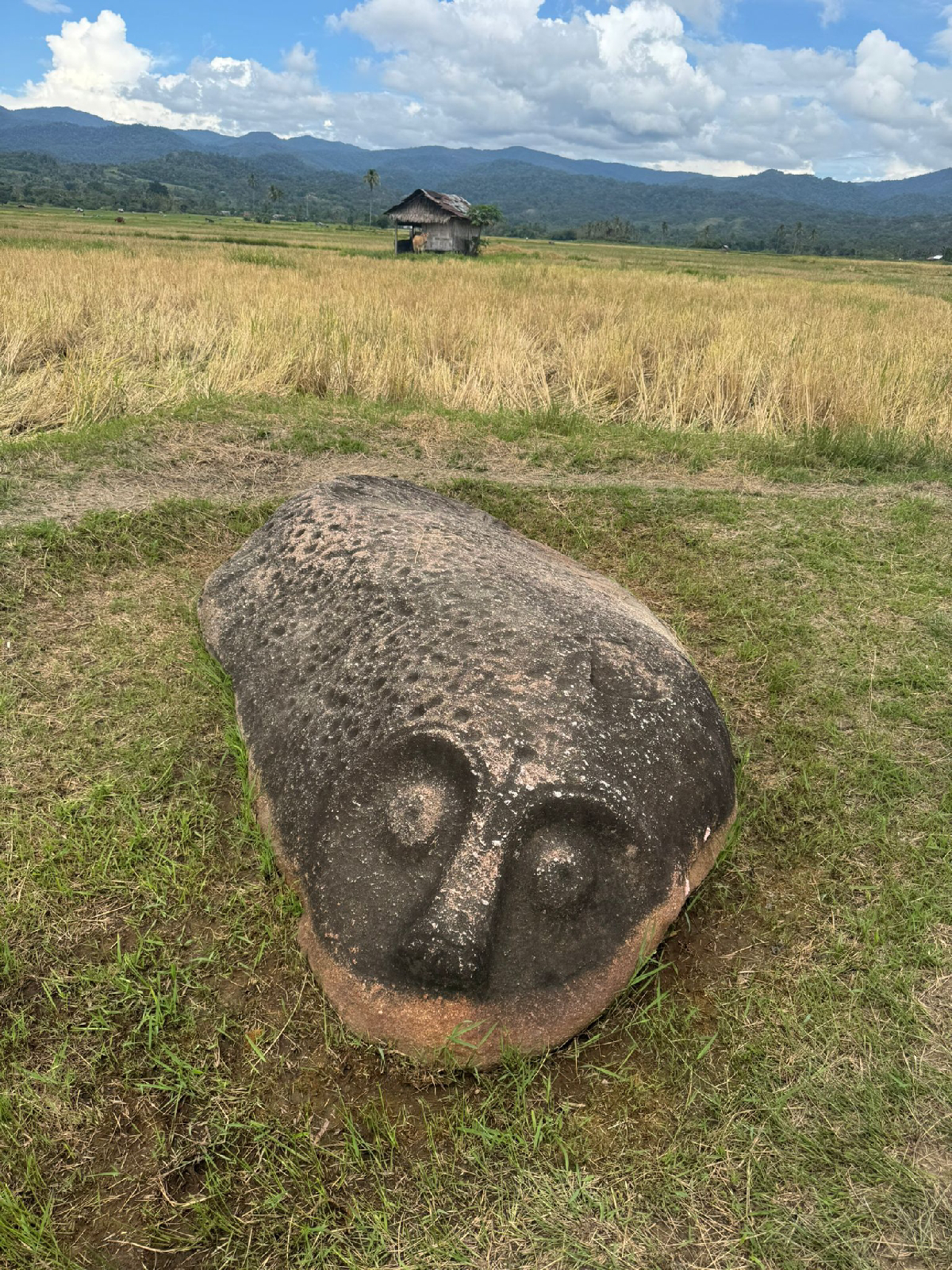Foreword
The megalithic cultural heritage is one of the most astonishing legacies in human history. From the towering stones of Stonehenge to the mysterious statues of the Bada Valley, these ancient traces not only hold archaeological value but also convey profound spiritual, social, and cultural messages.
This e-book is composed as an effort to introduce and further explore the meaning of megalithic culture found across the globe, particularly in Central Sulawesi—a region that holds a unique and lesser-known but invaluable megalithic heritage.
Through the exploration of the history, forms, functions, and socio-cultural context of megaliths, the author hopes this work will contribute—however modestly—to growing awareness and concern for the preservation of cultural sites that face various threats in modern times.
May this e-book serve as a valuable resource for students, researchers, cultural activists, and the general public who cherish history and ancestral heritage.
Warm regards,
Author: Deddy Todongi
🪨 Chapter 1: Introduction
What Is Megalithic Culture?
Megalithic culture refers to prehistoric societies that produced and used large stones (megaliths) as part of their social, religious, and symbolic life. The term megalith comes from the Greek: mega (large) and lithos (stone). This culture emerged during the Stone Age and spread across various regions of the world—from Europe to Asia, including Indonesia.
Megaliths are not just randomly arranged large stones. Behind their massive size and the complex work required in prehistoric times lies a wealth of messages and cultural values passed down through generations. Megaliths are key indicators of how ancient humans honored ancestors, understood the cosmos, and shaped social structures.
When and Where Did Megalithic Culture Develop?
Megalithic culture is believed to have emerged between 3000–2000 BCE and developed independently in various locations, yet with similar patterns. In Europe, there's Stonehenge in England and standing stones in France. In Asia, megalithic structures are found in India, South Korea, and Indonesia. Even in the Americas and Africa, similar cultures existed—proving that the use of monumental stones was a cross-cultural phenomenon.
Functions and Meanings of Megaliths
Generally, megaliths served several key functions:
Religious or spiritual function: places to worship ancestral spirits.
Social function: symbols of status, power, or wealth.
Astronomical function: markers of the sun, moon, or seasons.
Funerary function: sarcophagi, dolmens, or kalamba as burial sites.
Though functions varied by region, most highlight the importance of community and connection with the spiritual or natural world.
The Relevance of Megaliths in Historical Study.
Studying megalithic culture helps us understand ancient mindsets, social organization, and technological capabilities. From stone, we learn about faith, identity, and collective memory. Megalithic sites are also essential to archaeology, anthropology, and historical research.
However, many sites are now damaged or at risk due to lack of protection, land use changes, and low public awareness. Thus, reconnecting this culture with the public through education and documentation is crucial.
Purpose of This Book
This e-book was created to expand public understanding of megalithic culture—not only from a global historical perspective but also through a deeper exploration of Central Sulawesi’s heritage, which remains rich in mystery and cultural value.
Through this book, the author hopes readers will:
Understand the historical context of global megalithic culture.
Recognize Indonesia’s and Central Sulawesi’s megalithic legacy.
Cultivate curiosity and concern for cultural preservation.
🌍 Chapter 2: Megaliths Around the World
Megalithic culture is not a local phenomenon. Its presence spans continents, reflecting how ancient humans—despite differences in language and geography—shared similar ways of expressing their relationships with nature, ancestors, and the spiritual world. This is what makes megaliths a cultural heritage of all humankind.
🏰 2.1 Europe: The Oldest and Most Famous Megalithic Monuments
Stonehange
One of the world’s most famous megalithic sites, located in Salisbury, England. Built between 3000–2000 BCE, this stone circle is believed to have served as a ritual site, burial ground, and astronomical observatory. How the giant stones were moved and arranged remains a mystery.
Over 3,000 standing stones neatly aligned across nearly 4 km in Brittany. Estimated to date back to 4500 BCE, the formation is believed to be related to spiritual beliefs or a calendrical system.
🏯 2.2 Asia: Megaliths from Mountains to Valleys
Gunung Padang (Indonesia)
Located in Cianjur, West Java, this site is claimed to be Southeast Asia’s largest megalithic complex. Its terraced structure made of andesite stones is thought to be an ancient ceremonial center. Some researchers believe it predates the Egyptian pyramids.
Korean Dolmens
Thousands of dolmens (stone tomb tables) from the Bronze Age are found in Gochang, Hwasun, and Ganghwa. These sites are listed as UNESCO World Heritage due to their number and uniqueness.
🐘 2.3 Africa: From Deserts to the Nile
Nabta Playa (Egypt)
Located in the Nubian Desert, this site may be older than Stonehenge. The arrangement of stones reveals high astronomical knowledge among prehistoric African societies. It’s considered a precursor to ancient Egyptian civilization.
🗿 2.4 Oceania: The Mystery of Easter Island
Moai
This Pacific island features over 800 large stone statues (moai) facing inland. The moai are believed to represent ancestral figures with spiritual power and were built by Polynesian peoples around the 13th–16th centuries.
🏞 2.5 Americas: Stone Wonders of the New World
Sacsayhuamán (Peru)
A massive stone wall near Cusco, built by the Inca using stones weighing hundreds of tons. The precision in fitting the stones without mortar is evidence of exceptional engineering.
🤝 2.6 Global Similarities and Uniqueness
Despite differences in geography and culture, most megalithic civilizations:
Used stones for worship and burial.
Associated megaliths with cosmic or spiritual forces.
Used megaliths as symbols of status or power.
Positioned them strategically (hilltops, valleys, solar alignments, etc.).
Styles, shapes, and techniques varied, but the cultural essence reveals a universal human need to remember, honor, and symbolize eternity.
🇮🇩 Chapter 3: Megaliths in Indonesia
Indonesia has one of the richest and most diverse megalithic heritages in the world. From west to east, large stones used for rituals, burials, or symbols of power are scattered across its many islands. These megaliths not only reflect ancient technical ability but also mirror the strong spiritual and social structures of traditional societies.
🗿 3.1 Distribution of Megalithic Sites in Indonesia
Sumatera
Nias: Features inauguration stones, seated stones, and dolmens still used in current traditions.
Pasemah (South Sumatra): Known for anthropomorphic and zoomorphic stone statues.
West Java
Gunung Padang (Cianjur): A terraced megalithic site, believed to be an ancient ceremonial center.
Kalimantan
Stone remains and spiritual monuments are found in parts of Central and East Kalimantan.
Bali and Nusa Tenggara
In Sumba, the tradition of erecting large stones for aristocratic burials continues, accompanied by ceremonies.
Sulawesi
South Sulawesi has dolmens and stone coffins in Toraja.
Central Sulawesi holds one of the oldest and richest megalithic cultures in Indonesia: Bada, Napu, and Besoa Valleys.
Maluku and Papua
Though fewer in number, ceremonial stones and simple sarcophagi have been discovered.
🧭 3.2 Unique Features of Indonesian Megaliths
Terraced Platforms (Punden Berundak): Often linked to ancestral worship.
Megalithic Statues: Particularly in Sumatra and Central Sulawesi, shaped like humans or animals.
Social-Spiritual Function: Megaliths serve as status symbols and spiritual connectors.
Living Traditions: In areas like Sumba and Nias, large stone rituals are still practiced.
⚖️ 3.3 A Forgotten Heritage
Unfortunately, many megalithic sites in Indonesia are poorly managed due to:
Agricultural expansion and development.
Lack of public awareness.
Minimal documentation and follow-up research.
Preservation efforts must involve local communities, public education, and culturally rooted promotion.
🏞️ Chapter 4: Megaliths in Central Sulawesi
Central Sulawesi is one of the most unique and mysterious megalithic centers in Indonesia—and the world. Within the Lore Lindu National Park lie hundreds of megalithic relics with forms and meanings not yet fully understood.
The main megalithic areas include three valleys: Bada, Napu, and Besoa—forming a cultural triangle rich with ancient secrets.
🗺️ 4.1 The Three Megalithic Valleys
Bada Valley (Poso Regency)
Known for large anthropomorphic statues such as Palindo (the largest) and Maturu.
Statues feature expressive faces, round eyes, smiling or open mouths, and often lack legs.
Many kalamba (large cylindrical stone vessels) and tutu’na (their lids) are found here.
Besoa Valley (also called Behoa)
Contains monumental kalamba, dolmens, and ceremonial stones.
Some kalamba were found in riverbeds, suggesting a possible water ritual function.
Napu Valley
North of Besoa Valley.
Contains simpler megaliths such as standing stones (menhirs) and kalamba.
Acts as a cultural bridge between Bada and Besoa.
🧱 4.2 Types of Megaliths in Central Sulawesi
1. Stone Statues: Mostly human-shaped, upright or half-bodied, with prominent heads, bulging eyes, and folded hands.
2. Kalamba: Large cylindrical stone containers carved from single blocks—likely burial or sacred storage.
3. Tuturangga: Flat stones, possibly used as altars or ritual seats.
4. Standing Stones (Menhirs): Rare, used for territorial markers or worship.
5. Carved and Hollowed Stones: Some feature mysterious markings or holes whose meanings remain unknown.
🔍 4.3 Functions and Symbolic Meaning
Archaeologists believe these megaliths were used for:
1. Ancestor worship.
2. Burial or remains storage (especially kalamba).
3. Symbols of leadership and authority.
4. Spiritual communication with deities or the afterlife.
No writing system or inscriptions have been found, so much of the interpretation remains speculative.
🗣️ 4.4 Myths and Folklore
Locals believe the stone figures are humans cursed into stone for violating taboos or arrogance. Such stories enhance the mystical aura of the sites and reflect how traditional values are passed down through oral tradition.
⚠️ 4.5 Threats and Preservation
Although many sites are within a national park, they face:
- Poor maintenance.
- Natural and human-induced damage.
- Lack of comprehensive documentation.
Preservation must involve community-based approaches, regional government support, and academic collaboration to promote these sites as world cultural heritage.
Chapter 5: The Social and Symbolic Meanings of Megaliths
Megalithic monuments are more than just stones arranged in curious formations. Across cultures and continents, they served as anchors for identity, memory, and community. Their existence is inseparable from the spiritual and social life of the ancient people who built them.
Megaliths as Social Markers
In many regions, the size, placement, and complexity of megaliths reflected the power and social status of individuals or clans. In some Indonesian traditions, such as those in Sumba or Nias, the construction of a megalith was tied to elaborate funeral rituals and social competition. A larger stone meant a greater show of wealth, influence, or devotion to ancestors.
In Central Sulawesi, particularly in Bada, Besoa, and Napu Valleys, the statues known as arca (such as palindo and kalamba) may have held similar functions. While their exact meanings remain elusive, their sheer scale suggests association with high-ranking figures or sacred rituals.
Spiritual and Cosmological Symbolism
For many ancient communities, megaliths were more than earthly creations—they were cosmic tools. They marked celestial alignments, seasonal changes, or served as intermediaries between the human and spiritual realms.
In the Bada Valley, for instance, the orientation and positioning of certain megaliths suggest that they were carefully placed with consideration to the landscape and sky. Some scholars argue that their placement reflects a deep understanding of nature, the cycle of life and death, and the unseen world of spirits.
Handprint paintings and megalithic faces also suggest symbolic connections to ancestors, fertility, or even mythological beings that guided or guarded the community.
Collective Memory and Identity
Megaliths were a form of cultural memory—permanent reminders of a shared history and belief system. They may have commemorated heroic figures, marked sacred events, or served as gathering points for rituals.
Today, these stones continue to embody cultural pride. Among the descendants of the original communities—like the To Bada or To Napu—the megaliths still evoke stories, taboos, and reverence. Even without written records, these stones “speak,” preserving a worldview that has survived for centuries.
















إرسال تعليق